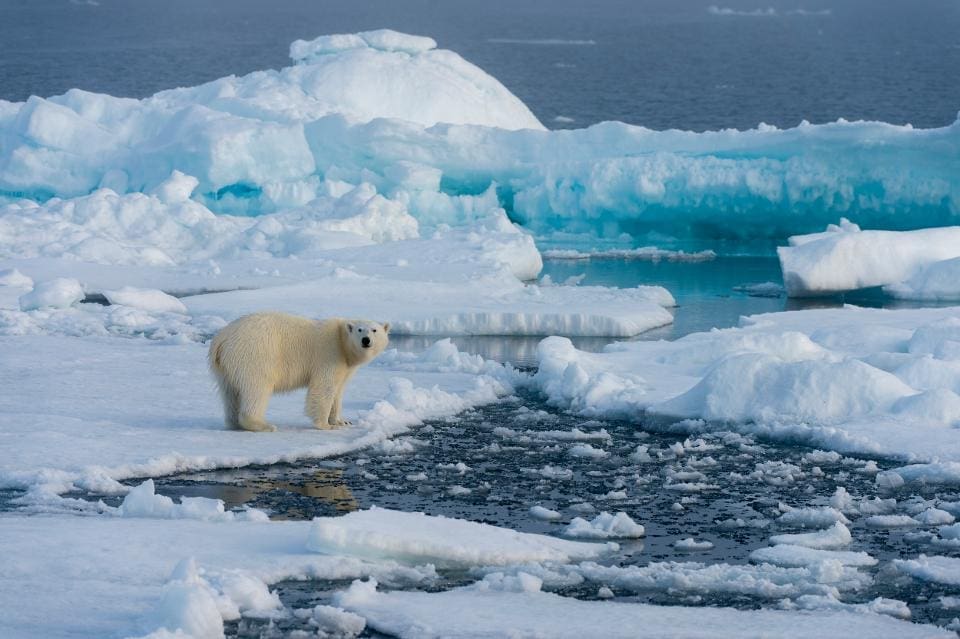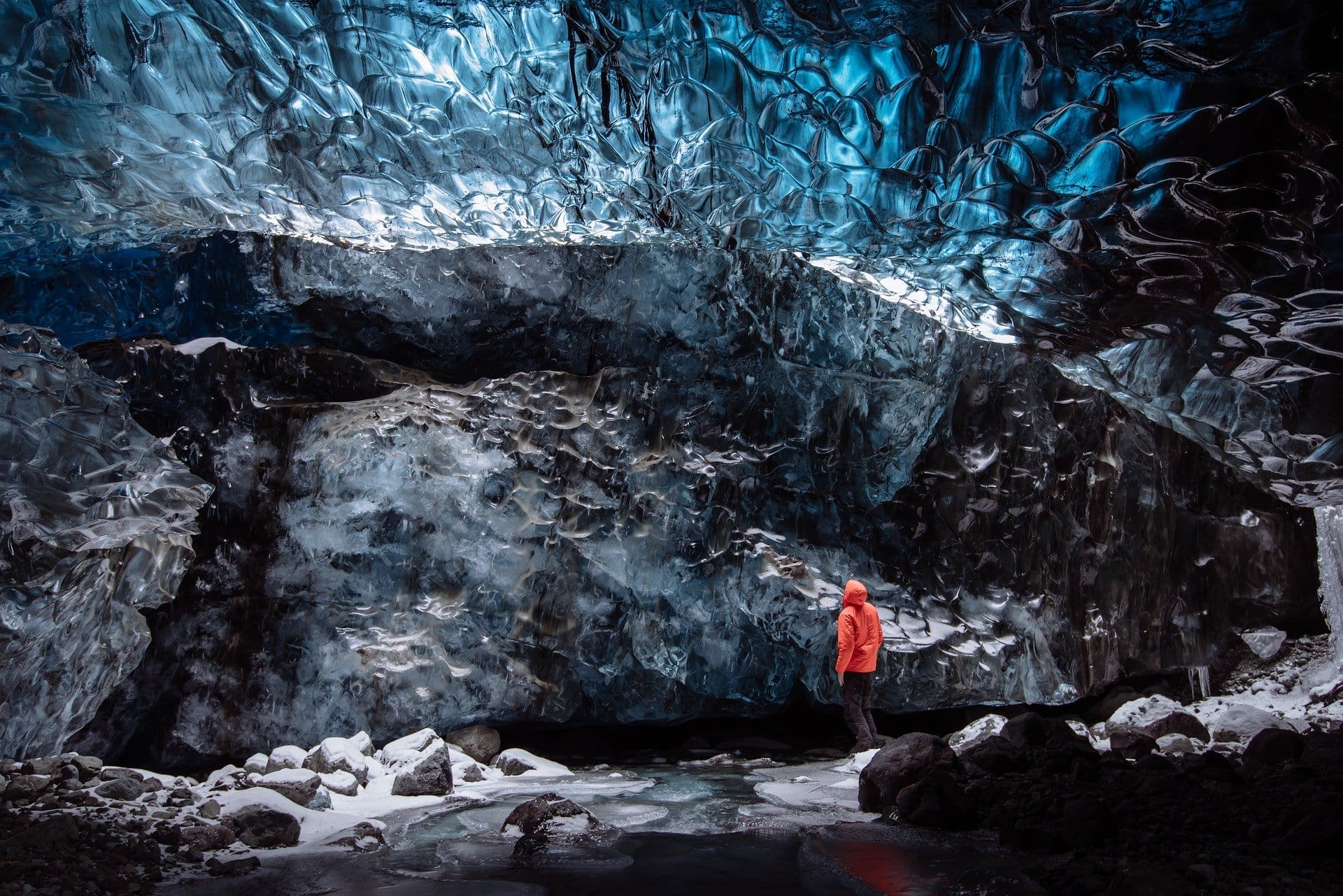[social_warfare]
Svalbard is the world’s northernmost civilisation and one of the most enchanting and awe-inspiring places on earth. Imagine a region set in darkness for months on end that abruptly switches to months of endless light with bright sunshine spread out over snow scattered wilderness. Where the only dangers facing humans are polar bears and mother nature. You won’t need to look for long when searching for reasons to visit Svalbard.
Christmas folklore has created a real magical atmosphere around the north pole and the arctic circle, and the Svalbard Archipelago in Norway definitely delivers on everything you could possibly imagine and so much more.
Things to do in Svalbard
Svalbard is one of the wildest parts of the world, and its epic winter landscape makes for a host of bucket list activities!
An in-depth shortlist of the best things to do in Svalbard will need a whole article on its own, so I’ll just briefly mention some of the highlights:
- Go on safari
- Watch the northern lights around a camp fire
- Explore an ice cave
- Explore the wilderness on a snow mobile
- Visit the global seed vault
- Go dog sledding
Here are 11 reasons to visit Svalbard this year:
1. Polar Bears
For those passionate about wildlife, Svalbard’s premier attraction is its population of roughly 3,000 majestic, snow-white polar bears. As one of the planet’s most emblematic and captivating creatures, polar bears significantly boost Svalbard’s appeal, providing unparalleled opportunities for observation.
The polar bear, the largest land carnivore globally, is categorized as a marine mammal due to spending most of its existence on the sea’s drifting ice floes. Wildlife excursions by boat venture into the ocean, allowing you to watch and capture images of polar bears in their natural habitat.

Females construct dens in the ice to birth their young, who typically stay by their side for two years. The ringed seal, their main food source, is abundant in Svalbard, enhancing your chances of spotting one.
While sightings are more frequent around the islands near Spitsbergen, it’s wise to always be prepared for a possible encounter, even within town limits. Polar bears do not recognize humans as anything other than potential food.
Predicting the optimal time for polar bear sightings is challenging since they traverse the area without constraints, capable of covering vast distances quickly. Likewise, pinpointing the best spots for observation is tough. For the best experience and up-to-date information on polar bear locations, it’s highly recommended to participate in a guided tour with a knowledgeable local guide.
2. The Northern Lights
The Northern Lights, or Aurora Borealis, have captivated humans for centuries, inspiring a mix of scientific explanation and mythological interpretation. While theories about their origin vary, one universally acknowledged fact is that witnessing the Northern Lights is a key draw for visitors to Svalbard.
These spectacular lights are the result of solar winds interacting with gaseous particles from the sun. When these particles collide with Earth’s atmosphere at altitudes of 90 to 180 kilometers, they generate electromagnetic radiation visible as the colorful display known as the Northern Lights.

To fully enjoy the Aurora Borealis, you need complete darkness, free from any artificial light sources. Locations outside urban centers, like the town of Longyearbyen, offer prime viewing conditions under the natural light of the moon, stars, and aurora itself.
The optimal viewing times are during the night, especially in the darkness of winter. Svalbard experiences the Polar Night during winter months, a period when the sun does not rise for extended periods, providing unique opportunities to observe the aurora at any hour.
Local tour operators in Svalbard provide various ways to experience the Northern Lights, including snowmobiles, dog sleds, boats, or on foot with snowshoes. For those seeking an enhanced experience, premium tours combine the awe-inspiring sight with delicious meals and fascinating tales about the lights’ cultural and historical significance.
3. Global Seed Vault
Tucked away within a mountain in a secluded area of Svalbard, the Global Seed Vault stands as the ultimate backup for global agriculture, safeguarding over 2.5 billion seeds. Designed to withstand both time and the extreme conditions of its environment, the vault is a testament to humanity’s foresight, preserving the most extensive assortment of crop diversity in the world

Hidden beneath the Arctic’s permafrost, the vault contains nearly a million distinct seed varieties, a marvel unknown to many and a fascinating anecdote for travelers.
While the Global Seed Vault itself might not be the sole reason for a trip to Svalbard, since access to its interior is restricted, the exterior alone, especially under favorable weather conditions, offers a unique photo opportunity that could be the highlight of your Instagram feed.
4. Dog Sled Adventures
Navigating the expansive Arctic terrain on foot can be challenging, particularly for covering great distances. This led to the innovation of the Dog Sled, a practical mode of transportation across the icy expanses of the polar regions.

Dog sled tours offer an immersive experience on a sled built for two, giving participants the opportunity to play the role of both musher (the driver) and passenger. Driven by a team of enthusiastic huskies, these tours glide through the vast wilderness at a gentle pace, allowing ample time to admire Svalbard’s stunning landscapes and perhaps even catch sight of local wildlife such as reindeer or arctic foxes.
Available options range from brief day excursions to more extensive journeys, including overnight stays in igloos. At the tour’s conclusion, participants have the chance to assist in settling the dogs into their kennels as a gesture of appreciation for their service, followed by a moment to warm up with a hot beverage and snack.
5. Ice Cave Experiences
Svalbard’s countless glaciers contain a plethora of long natural passages leading to incredible ice caves, which you’ll find hard to believe aren’t man made.

Armed with a headlamp, crampons, and a helmet, you’re ready to delve into the glaciers, navigating through an intricate network of meltwater channels and caves at your own pace. This tranquil, silent realm is adorned with icicles and snow crystals, bathed in shades of white and blue.
You can reach these glaciers through several methods, such as incorporating them into your dog sledding or snowmobile adventures. Tour operators in Longyearbyen can offer guidance on the optimal itinerary for you, taking into account the season and current weather conditions.
6. Snow sports
Svalbard transforms into a magical winter landscape throughout the year, attracting enthusiasts with its array of snow sports. Key attractions include skiing, snowboarding, biking, snowmobile adventures, and ATV safaris.
Skiing options in Svalbard range from short, beginner-friendly outings to more challenging, extended treks. Your choice will likely depend on your skiing expertise and available time. A favored activity is a summit ski ascent of Trollsteinen (850 meters above sea level), offering stunning panoramic vistas before the exhilarating descent.
Snowmobiles reign as the preferred mode of transportation in Svalbard, providing a quintessential regional experience. Snowmobile excursions vary in duration and route, with common journeys exploring the vast, open landscape in search of arctic wildlife and remarkable landmarks like icebergs, historical trapper cabins, and glaciers.
In the summer, ATV safaris serve as the warm-weather counterpart to snowmobile tours, offering adventurous exploration of the terrain.
7. Arctic Wildlife
One of the top reasons to visit Svalbard is the wide range of unique species of arctic wildlife on offer. As we’ve already mentioned, Svalbard is arguably the best place in the world to see polar bears in the wild and with their being more polar bears than people, sightings are extremely common.
Herds of reindeer can be seen grazing around Longyearbyen like herds of sheep and arctic foxes are always snooping around, seemingly up to no good. Svalbard is home to a variety of iconic marine wildlife; ringed seals and harp seals are very common, along with walrus and various whale species like the beluga and humpback whale.
Walrus’ are one of the few species that remain in the Svalbard area during winter and the population is thriving, with estimates of over 4,000 individuals. They are easily identifiable by their impressive tusks.
In addition, more than 200 bird species have been recorded in Svalbard and the surrounding waters. Arctic seabirds breed here in massive colonies which sometimes represent significant proportions of the global population.
8. Winter Hiking
For outdoor enthusiasts, one of the greatest reasons to visit Svalbard is the incredible winter hiking opportunities available thanks to the icy terrain of the Arctic environment.
Hikes can be inconsistent and routes are ever changing due to the unpredictable nature of the weather in the Polar regions, however Svalbard offers hiking opportunities that no other wilderness area or national park can. Hiking through the snow or up a giant glacier under the cover of darkness is an experience like no other! And if that wasn’t enough, the darkness could potentially be illuminated by the Northern Lights.
Tour guides will provide all the required gear which generally includes: helmets and walking poles. Most hikes will be combined with an ice cave tour or alternatively you can choose a route that takes you to the Global Seed Vault or if you’re up for it, a climb to the summit of Trollsteinen mountain.
9. Experience A Polar Night Or The Midnight Sun
The polar night only occurs in the northernmost and southernmost regions of the earth, when the sun doesn’t rise above the horizon for periods of more than 24 hours during the winter months.
During the polar night, you can expect days to be pitch black for around 20 hours with 3-4 hours of light blue haze in between. During this period, the northern lights are generally visible throughout most of the day.
The Polar Day or ‘midnight sun’ or also only occurs in the North and South Pole and is the exact opposite to the polar night. The midnight sun occurs during the summer months when the sun doesn’t drop below the horizon for periods of more than 24 hours.
During the summer months, the northern lights are not visible in the sky. The aurora is still active, however there aren’t enough hours of darkness for them to be seen.
10. Longyearbyen Town
Longyearbyen is the world’s northernmost settlement and the cultural hub of Svalbard. The micro-town is made up of a small yet vibrant community with multiple forms of accommodation and various restaurants and shops, which provide a true taste of Norwegian culture.
The town is your gateway to Svalbard and is inhabited by nature enthusiasts who choose to live in close proximity to the High Arctic wilderness and the wildlife that calls it home.
Here you’ll also find the Svalbard Museum where you can learn more about the history, geology, and wildlife of the region. Longyearbyen is the starting point for most adventures in Svalbard.
11. Experience a Sunny Winter
Although the term ‘spring’ is virtually meaningless in Arctic circle, there are some clear differences to the rest of the year and this period comes with its own reasons to visit Svalbard.
The months between mid-March and May in Svalbard come with increased light hours throughout the day as opposed to drastically increased temperatures and during these months the region sees a more normalised pattern of light hours during the day and darkness over night.
While there is a slight temperature increase, the landscape is still draped in beautiful ice and covered in snow as far as they eye can see. The increased light can make for much better wildlife viewing and day time activities and the benefit of darkness over night is that there are still amazing opportunities to chase the Northern Lights! Spring time could be the best time of year to visit Svalbard to get the full Arctic experience.






